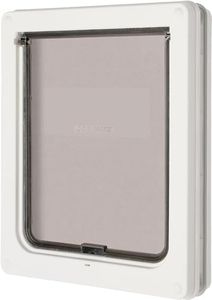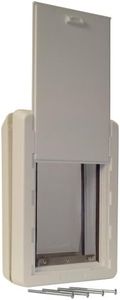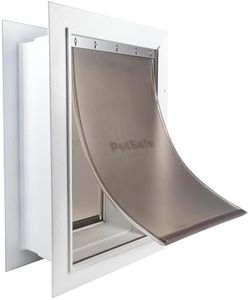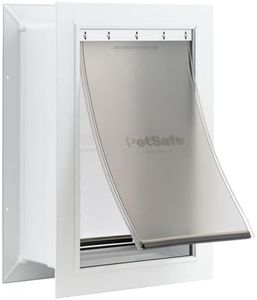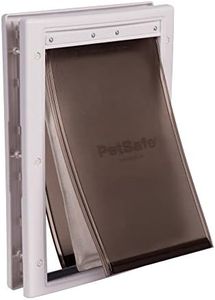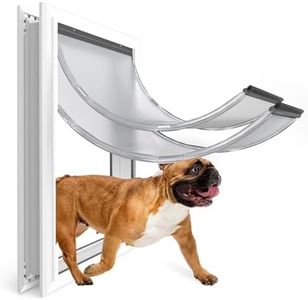We Use CookiesWe use cookies to enhance the security, performance,
functionality and for analytical and promotional activities. By continuing to browse this site you
are agreeing to our privacy policy
10 Best Insulated Dog Doors
From leading brands and best sellers available on the web.Buying Guide for the Best Insulated Dog Doors
Choosing an insulated dog door is about finding the right balance between comfort for your pet and energy efficiency for your home. Insulated dog doors keep your house cozy, block drafts, and help protect against extreme outdoor temperatures. Before picking a door, think about where you will install it (wall or door), the size your dog needs, and how much insulation your home requires—especially if you live in an area with very hot or cold weather.Insulation Type and ThicknessInsulation in a dog door refers to the materials and design used to resist heat transfer, keeping warmth in during winter and out during summer. Common insulation types include double or triple flaps, foam cores, and magnetic seals. Thicker, multi-layered doors provide better insulation, but may be heavier or harder for smaller pets to use. If you live in a mild climate, a basic insulated flap may be enough, while for harsh winters or summers, seek out doors with robust sealing and thick insulation.
Weather SealingWeather sealing involves features like magnetic strips, rubber gaskets, or brush strips around the door that block air, water, and debris. Strong sealing prevents drafts and leaks, which is important for energy savings and comfort, especially during bad weather. High-quality weather seals are essential in areas with frequent rain, wind, or snow, while places with moderate climates might only need basic sealing.
Size and Flap OpeningThe size of the flap opening is how tall and wide the door is for your pet to pass through. This is crucial for your dog's comfort and safety. Measure your pet at their widest and tallest points, making sure they can pass through easily without crouching or squeezing. Small flaps are suitable for little breeds, while larger or taller dogs need big openings. When in doubt, opt for a slightly bigger size to future-proof for growing pets or multiple animals.
Installation TypeDog doors can be installed in doors, walls, or glass panels. Door-mounted options are typically easier to install, while wall-mounted doors offer more flexibility for placement but may require more complicated installation. Consider where in your home the door will be most convenient for both you and your dog, and be sure the installation instructions match your DIY abilities or that you’re willing to hire help if needed.
Security FeaturesGood insulated dog doors include features such as locking panels or security covers to prevent unwanted animals or intruders from entering. Some have more advanced security options, like electronic locks tied to your pet’s collar. If you live in an area where security is a concern, prioritize models with sturdy locks or electronic access, while homes in safe neighborhoods may do well with simpler manual locks.
Durability and MaterialsThe materials used in the construction affect how well the dog door stands up to heavy use, rough weather, and energetic pets. Look for sturdy plastics, metals, and UV-resistant materials. If you have a large or very active dog, or if the door will see heavy daily use, prioritize durability. For gentle or small pets in mild conditions, lighter materials may be sufficient.
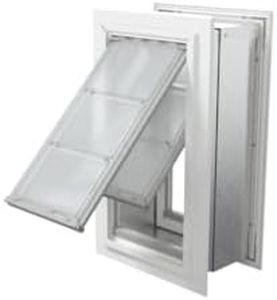
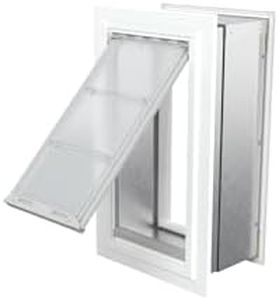
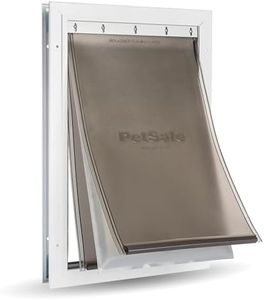
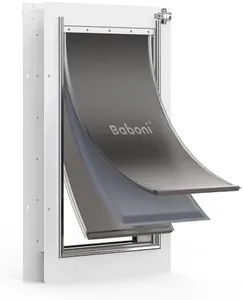
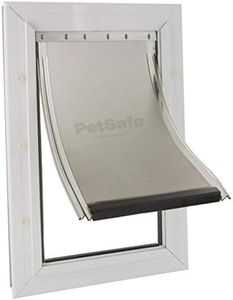
![[Petoasis] Heavy Duty Aluminum Dog Door with Lock,3 Flap Insulated Doggie Doors with Installation Manual,Durable and Rust Resistant, Patent: USD1057087S, (Silvery White, Large for Wall)](https://images-proxy.bestreviews.guide/zHc3IfLjeAwI5PTlKuQ3tFvQMtE=/0x300/https://m.media-amazon.com/images/I/418cZqN9i5L._AC_CX679_.jpg)
